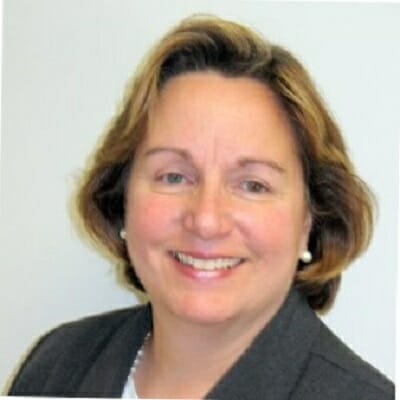Location, location, location.
Back in the day, this was a common realtor mantra for choosing your newest home. Although location still is important, for those of us who are getting older, the convenience and availability of services become important tick list items for our next home of choice.
Technology also has become an important decision factor for residential customers and their families in the selection process. Boomers are active and independent people, so safely maximizing quality of life is key. This may include or even require a little extra remote monitoring oversight to support their independence, while keeping family and professional caregivers informed of how they are doing.
Forward-thinking assisted living owners already are adopting simple, easy-to-use technology additions to their communities that create more customer, family and staffing satisfaction, supported by increased operational efficiencies. The good news is that technology improves at an astounding rate, and next-generation technology that will become available this year is better, faster and cheaper to use.
Here is an overview of some simple, easy-to-use and next-generation technology solutions that are or will be available soon to help you span the continuum of care with ease.
Where and how are Mom and Dad? An often-frustrating question for family members is one of the easiest to solve, and economically, too. A simple way to begin your new technology transformation is to move from the stigmatizing PERS device and offer affordable, easy-to-use location and communication technology for your active residents.
This technology is now available in stylish wristwatch-style wearables that connect to the smartphone apps of both family and professional caregivers to provide Global Positioning Systems location and status information. Some also include an integrated pre-activated cellular phone, two-way audio (no button pushing required by wearer) and safe zone notifications for those who may tend to wander. It’s a great way to keep the family connected and a thoughtful and often necessary service offering.
Tech Tip: If choosing a cellular-enabled wearable, ask whether it’s LTE compatible, for maximum investment protection. Many of the current devices are not, and they will not work after 2020.
Staying connected when out and about. GPS is ideal for outdoor location-tracking, but something more might be needed if indoor tracking is required. New technology using indoor proximity sensors for at home or other “away” indoor locations – consider a crowded shopping mall or superstore – can provide instant notifications and specificity of whereabouts where GPS is not enough.
It’s easy to become separated on a resident outing, but this new tech covers a smaller area range with instant notification. And given the indoor proximity sensors inherent precision and accuracy, it is an especially good fit for multi-story, multi-unit complexes.
Activity, status and wellness monitoring. We all are familiar with monitoring via cameras or current sensor technology. These technologies often are built for one type of issue, such as a fall in the bathroom, but leave blank spots in understanding the overall well-being of your resident.
A next generation of sensors can measure activity (or lack of activity) and other behavioral and environmental changes that can affect your residents. These are simple to install, unobtrusive (sensor-driven models mean no cameras), and can monitor subtle changes that can affect wellness, such as activity, falls, humidity level, temperature out of range, even indicators for potential nutritional or depression issues.
These new sensors are based on a technology that is like indoor radar with very high precision, seeing through walls, in three dimensions and with four inches of accuracy. This is the same technology that Apple is putting into the iPhone to make transactions more secure.
With falls being the most common and detrimental issue for older adults, subtle gait changes that occur over time can be monitored and proactively addressed. These small, wall-mounted sensors accurately and unobtrusively can monitor more than one person in an apartment. Baselines for expected, routine activity are developed so any activity that is out of a pre-set normal range will be highlighted for further examination.
Sleep is another significant wellness indicator. New-generation bed monitors are highly sensitive and can provide information on quality of sleep, number of times in and out of bed, and other factors that can be predictive of a developing illness or increasing fall probability. Knowing this information before it escalates into something more serious means it can be addressed early and proactively, potentially preventing an unwanted, uncomfortable and costly hospitalization.
Predictive analytics. A term that is heard and written a lot, all it really means is that data are gathered through various means and analyzed to provide information about activity and environmental changes that may trigger an adverse event. These data can provide actionable insights to predict when such an event may be imminent, so that family and residential staff can act and prevent issues.
Tech tip: In choosing technology, look for the most accurate and precise data that are the least intrusive. For instance, sensors can provide highly accurate data without the intrusion or loss of privacy that some experience with cameras or video. Also look for devices with data that can be pulled together in a cloud to get a broad spectrum of insights with the predictive analytics.
Actionable insights for your business. Just as predictive analytics can identify areas that may signal intervention is needed for your residents, you also can use the same data and analytics to improve the business operations of your assisted living or other care facility and mitigate risk. Using the precision and accuracy of sensor-driven technology, you can automate workflows, minimize administrative tasks and support compliance by with automatic data gathering rather than less precise manual information gathering.
The simplicity of the new technology supports a happier staff, more focused on customer service and care to develop longer, meaningful relationships with your residents. It allows your business to understand when and how residents’ needs change and have data-driven discussions with them and their families.
New technology is probably at its most exciting in a long time. Simple implementation, lower cost and more precision will open up options to improve quality of life for your residents, their families and your staff with more actionable information on your resident’s condition and wellbeing.
For your business, it means longer engagements for both residents and staff, more levels of service to offer, and maximized productivity and compliance through workflow automation. All provided by affordable, easy-to-use precision technology that provides a precise, accurate, 360-degree view of your residents across the continuum of care.
Now is the time to adopt, learn and act on new technology options that will improve your competitive position for acquiring and retaining both residents and staff while streamlining your business. It’s an exciting time for all of us.




